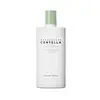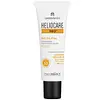What's inside
What's inside
 Key Ingredients
Key Ingredients

 Benefits
Benefits

 Concerns
Concerns

 Ingredients Side-by-side
Ingredients Side-by-side

Water
Skin ConditioningButyloctyl Salicylate
Skin ConditioningDibutyl Adipate
EmollientPropanediol
SolventEthylhexyl Triazone
UV AbsorberTerephthalylidene Dicamphor Sulfonic Acid
UV AbsorberBis-Ethylhexyloxyphenol Methoxyphenyl Triazine
Skin ConditioningPolyglyceryl-3 Distearate
EmulsifyingNiacinamide
SmoothingTromethamine
Buffering1,2-Hexanediol
Skin ConditioningDiethylamino Hydroxybenzoyl Hexyl Benzoate
UV FilterCaprylyl Methicone
Skin ConditioningPentylene Glycol
Skin ConditioningPolymethylsilsesquioxane
Polysilicone-15
UV FilterCentella Asiatica Extract
CleansingFicus Carica Fruit Extract
HumectantOenothera Biennis Flower Extract
AstringentUlmus Davidiana Root Extract
Skin ConditioningPinus Palustris Leaf Extract
TonicPueraria Lobata Root Extract
HumectantChamaecyparis Obtusa Water
MaskingMelaleuca Alternifolia Leaf Water
AntimicrobialHydrogenated Lecithin
EmulsifyingGlyceryl Stearate
EmollientCetearyl Alcohol
EmollientSorbitan Laurate
EmulsifyingSodium Stearoyl Glutamate
CleansingCarbomer
Emulsion StabilisingAmmonium Acryloyldimethyltaurate/Vp Copolymer
Glyceryl Stearate Citrate
EmollientAcrylates/C10-30 Alkyl Acrylate Crosspolymer
Emulsion StabilisingEthylhexylglycerin
Skin ConditioningPolyglyceryl-4 Laurate
EmulsifyingAdenosine
Skin ConditioningButylene Glycol
HumectantTocopherol
AntioxidantGlycerin
HumectantZinc Oxide
Cosmetic ColorantEthoxydiglycol
HumectantCaprylic/Capric Triglyceride
MaskingOctyldodecanol
EmollientAsiaticoside
AntioxidantGlycolipids
Skin ConditioningMadecassic Acid
Skin ConditioningAsiatic Acid
Skin ConditioningPolyhydroxystearic Acid
EmulsifyingC12-13 Alketh-9
EmulsifyingTriethoxycaprylylsilane
Ceramide NP
Skin ConditioningDilauryl Citrate
EmollientWater, Butyloctyl Salicylate, Dibutyl Adipate, Propanediol, Ethylhexyl Triazone, Terephthalylidene Dicamphor Sulfonic Acid, Bis-Ethylhexyloxyphenol Methoxyphenyl Triazine, Polyglyceryl-3 Distearate, Niacinamide, Tromethamine, 1,2-Hexanediol, Diethylamino Hydroxybenzoyl Hexyl Benzoate, Caprylyl Methicone, Pentylene Glycol, Polymethylsilsesquioxane, Polysilicone-15, Centella Asiatica Extract, Ficus Carica Fruit Extract, Oenothera Biennis Flower Extract, Ulmus Davidiana Root Extract, Pinus Palustris Leaf Extract, Pueraria Lobata Root Extract, Chamaecyparis Obtusa Water, Melaleuca Alternifolia Leaf Water, Hydrogenated Lecithin, Glyceryl Stearate, Cetearyl Alcohol, Sorbitan Laurate, Sodium Stearoyl Glutamate, Carbomer, Ammonium Acryloyldimethyltaurate/Vp Copolymer, Glyceryl Stearate Citrate, Acrylates/C10-30 Alkyl Acrylate Crosspolymer, Ethylhexylglycerin, Polyglyceryl-4 Laurate, Adenosine, Butylene Glycol, Tocopherol, Glycerin, Zinc Oxide, Ethoxydiglycol, Caprylic/Capric Triglyceride, Octyldodecanol, Asiaticoside, Glycolipids, Madecassic Acid, Asiatic Acid, Polyhydroxystearic Acid, C12-13 Alketh-9, Triethoxycaprylylsilane, Ceramide NP, Dilauryl Citrate
Water
Skin ConditioningC12-15 Alkyl Benzoate
AntimicrobialArginine
MaskingPhenylbenzimidazole Sulfonic Acid
UV AbsorberDisodium Phenyl Dibenzimidazole Tetrasulfonate
UV AbsorberBis-Ethylhexyloxyphenol Methoxyphenyl Triazine
Skin ConditioningTitanium Dioxide
Cosmetic ColorantHexylene Glycol
EmulsifyingC14-22 Alcohols
Emulsion StabilisingC12-20 Alkyl Glucoside
EmulsifyingDiethylamino Hydroxybenzoyl Hexyl Benzoate
UV FilterNylon-12
Myristyl Alcohol
EmollientDipropylene Glycol Dibenzoate
EmollientDiethylhexyl Butamido Triazone
UV AbsorberPhenoxyethanol
PreservativePolypodium Leucotomos Leaf Extract
Skin ProtectingEthylhexyl Ferulate
AntioxidantFerulic Acid
AntimicrobialCaffeic Acid
AntioxidantPhysalis Angulata Extract
Skin ProtectingCeteareth-25
CleansingCaprylyl Glycol
EmollientMelanin
Skin ProtectingMyristyl Glucoside
CleansingEthylhexyl Triazone
UV AbsorberCaprylyl Methicone
Skin ConditioningHydrolyzed Wheat Protein/Pvp Crosspolymer
Glycerin
Humectant3-O-Ethyl Ascorbic Acid
Skin ConditioningAlumina
AbrasivePPG-15 Stearyl Ether Benzoate
EmollientDisodium Ethylene Dicocamide PEG-15 Disulfate
CleansingCamellia Sinensis Extract
AntioxidantEthylhexylglycerin
Skin ConditioningTocopheryl Acetate
AntioxidantXanthan Gum
EmulsifyingPhytosphingosine Hcl
Skin ConditioningArabidopsis Thaliana Extract
AntioxidantEthyl Lauroyl Arginate Hcl
Skin ConditioningPanthenyl Triacetate
Parfum
MaskingSimethicone
EmollientOxothiazolidine
Skin ProtectingDisodium EDTA
Silica
AbrasiveEthyl Linoleate
EmollientCaprylic/Capric Triglyceride
MaskingOleyl Alcohol
EmollientButylene Glycol
HumectantLecithin
EmollientSodium Benzoate
MaskingTocopherol
AntioxidantLinalool
PerfumingLimonene
PerfumingWater, C12-15 Alkyl Benzoate, Arginine, Phenylbenzimidazole Sulfonic Acid, Disodium Phenyl Dibenzimidazole Tetrasulfonate, Bis-Ethylhexyloxyphenol Methoxyphenyl Triazine, Titanium Dioxide, Hexylene Glycol, C14-22 Alcohols, C12-20 Alkyl Glucoside, Diethylamino Hydroxybenzoyl Hexyl Benzoate, Nylon-12, Myristyl Alcohol, Dipropylene Glycol Dibenzoate, Diethylhexyl Butamido Triazone, Phenoxyethanol, Polypodium Leucotomos Leaf Extract, Ethylhexyl Ferulate, Ferulic Acid, Caffeic Acid, Physalis Angulata Extract, Ceteareth-25, Caprylyl Glycol, Melanin, Myristyl Glucoside, Ethylhexyl Triazone, Caprylyl Methicone, Hydrolyzed Wheat Protein/Pvp Crosspolymer, Glycerin, 3-O-Ethyl Ascorbic Acid, Alumina, PPG-15 Stearyl Ether Benzoate, Disodium Ethylene Dicocamide PEG-15 Disulfate, Camellia Sinensis Extract, Ethylhexylglycerin, Tocopheryl Acetate, Xanthan Gum, Phytosphingosine Hcl, Arabidopsis Thaliana Extract, Ethyl Lauroyl Arginate Hcl, Panthenyl Triacetate, Parfum, Simethicone, Oxothiazolidine, Disodium EDTA, Silica, Ethyl Linoleate, Caprylic/Capric Triglyceride, Oleyl Alcohol, Butylene Glycol, Lecithin, Sodium Benzoate, Tocopherol, Linalool, Limonene
 Reviews
Reviews

Ingredients Explained
These ingredients are found in both products.
Ingredients higher up in an ingredient list are typically present in a larger amount.
You might know this ingredient as Tinosorb S or Bemotrizinol. It is a UV filter that covers both UVA and UVB rays.
This ingredient has two peak UV absorption peaks ( 310 and 340 nm) and is able to absorb both UV-A and UV-B rays. This ingredient works by preventing UV rays from reaching and damaging your skin.
On top of that - it is highly photostable and helps prevent the photodegration of other sunscreen ingredients such as avobenzone.
Tinosorb S is allowed in the EU, Australia, and Asia. It is close to being approved by the FDA and we'll hopefully get this ingredient in the U.S. by late 2025.
Fun fact: Tinosorb S is the most effective UV absorber at maximum concentration (measured by SPF) permitted in the EU.
This ingredient is oil-soluble, so your oil-cleansers will take this right off at night.
Learn more about Bis-Ethylhexyloxyphenol Methoxyphenyl TriazineButylene Glycol (or BG) is used within cosmetic products for a few different reasons:
Overall, Butylene Glycol is a safe and well-rounded ingredient that works well with other ingredients.
Though this ingredient works well with most skin types, some people with sensitive skin may experience a reaction such as allergic rashes, closed comedones, or itchiness.
Learn more about Butylene GlycolThis ingredient is an emollient, solvent, and texture enhancer. It is considered a skin-softener by helping the skin prevent moisture loss.
It helps thicken a product's formula and makes it easier to spread by dissolving clumping compounds.
Caprylic Triglyceride is made by combining glycerin with coconut oil, forming a clear liquid.
While there is an assumption Caprylic Triglyceride can clog pores due to it being derived from coconut oil, there is no research supporting this.
Learn more about Caprylic/Capric TriglycerideCaprylyl Methicone is a type of silicone.
It helps soften and soothe the skin by creating a thin film on top. This film helps trap moisture, keeping your skin hydrated.
Diethylamino Hydroxybenzoyl Hexyl Benzoate (DHHB) is a chemical UV-A absorber. It is formulated for high UVA protection (320-400 nm).
DHHB is well-liked for:
DHHB has been approved by the EU, Japan, Taiwan, and South America for use up to 10%. Unfortunately, it has not been approved for use in the US or Canada due to slow regulatory processes.
This ingredient is soluble in oils, fats, and lipids.
Learn more about Diethylamino Hydroxybenzoyl Hexyl BenzoateEthylhexyl Triazone is a modern chemical sunscreen that protects from UV-B radiation.
It is the most effective of existing UV-B filters, as it provides the highest level of photo-stable absorption. It protects from the entire UV-B range (280 to 320nm), with it's highest level of protection at 314nm.
Ethylhexyl Triazone is oil soluble, oderless and colorless, which mean it is able to be incorporated into a variety of different formulations.
It is not currently available within the United States due to slow changing FDA regulations. Outside of the US, it is used in formulations at concentrations up to 5%.
Learn more about Ethylhexyl TriazoneEthylhexylglycerin (we can't pronounce this either) is commonly used as a preservative and skin softener. It is derived from glyceryl.
You might see Ethylhexylglycerin often paired with other preservatives such as phenoxyethanol. Ethylhexylglycerin has been found to increase the effectiveness of these other preservatives.
Glycerin is already naturally found in your skin. It helps moisturize and protect your skin.
A study from 2016 found glycerin to be more effective as a humectant than AHAs and hyaluronic acid.
As a humectant, it helps the skin stay hydrated by pulling moisture to your skin. The low molecular weight of glycerin allows it to pull moisture into the deeper layers of your skin.
Hydrated skin improves your skin barrier; Your skin barrier helps protect against irritants and bacteria.
Glycerin has also been found to have antimicrobial and antiviral properties. Due to these properties, glycerin is often used in wound and burn treatments.
In cosmetics, glycerin is usually derived from plants such as soybean or palm. However, it can also be sourced from animals, such as tallow or animal fat.
This ingredient is organic, colorless, odorless, and non-toxic.
Glycerin is the name for this ingredient in American English. British English uses Glycerol/Glycerine.
Learn more about GlycerinTocopherol (also known as Vitamin E) is a common antioxidant used to help protect the skin from free-radicals and strengthen the skin barrier. It's also fat soluble - this means our skin is great at absorbing it.
Vitamin E also helps keep your natural skin lipids healthy. Your lipid skin barrier naturally consists of lipids, ceramides, and fatty acids. Vitamin E offers extra protection for your skin’s lipid barrier, keeping your skin healthy and nourished.
Another benefit is a bit of UV protection. Vitamin E helps reduce the damage caused by UVB rays. (It should not replace your sunscreen). Combining it with Vitamin C can decrease sunburned cells and hyperpigmentation after UV exposure.
You might have noticed Vitamin E + C often paired together. This is because it is great at stabilizing Vitamin C. Using the two together helps increase the effectiveness of both ingredients.
There are often claims that Vitamin E can reduce/prevent scarring, but these claims haven't been confirmed by scientific research.
Learn more about TocopherolWater. It's the most common cosmetic ingredient of all. You'll usually see it at the top of ingredient lists, meaning that it makes up the largest part of the product.
So why is it so popular? Water most often acts as a solvent - this means that it helps dissolve other ingredients into the formulation.
You'll also recognize water as that liquid we all need to stay alive. If you see this, drink a glass of water. Stay hydrated!
Learn more about Water